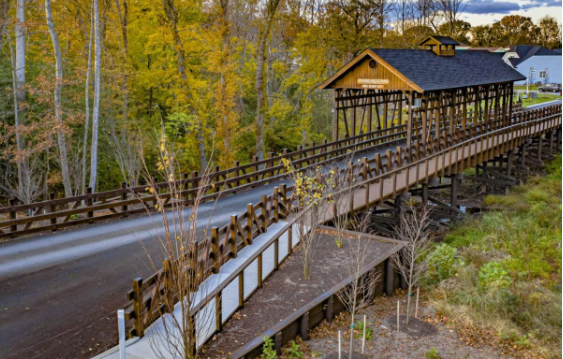Timber bridges are a popular choice for building structures that connect roads, paths, and other important locations. They have been used for centuries, and their advantages make them an excellent choice for both modern and traditional projects.
While timber bridges might seem simple, they offer many benefits when professionally built. In this article, we will discuss five major advantages of choosing professional timber bridge building.
Environmental Sustainability
One of the main reasons many people choose timber for bridge construction is its environmental benefits. Timber is a renewable resource, meaning that trees can be replanted, and timber can be harvested sustainably.
When professionals build timber bridges, they ensure that the wood used comes from responsibly managed forests. This helps to reduce the carbon footprint of the project and contributes to forest conservation.
Cost-Effectiveness
Timber bridges are often more affordable compared to other types of bridges made from materials like steel or concrete. Wood is generally less expensive than other materials, and it is easier to transport and handle.
The professional construction of timber bridges ensures that the design is optimized to minimize material waste and reduce overall costs. Additionally, timber is lightweight, which means less machinery is needed for construction.
Durability
When properly constructed, timber bridges can last for many years. Timber has natural properties that make it resistant to weathering, especially when treated with the right preservatives. Professional Timber Bridge Building uses techniques to protect the wood from moisture, decay, and insects.
The right treatments can ensure that the timber remains strong and stable over time. Timber bridges can withstand a range of environmental conditions, including rain, wind, and temperature changes.
Aesthetic Appeal
Another key advantage of timber bridges is their natural beauty. Timber has a warm, earthy look that blends well with outdoor environments. Whether the bridge is in a forest, near a river, or in a rural setting, timber naturally complements the surroundings.
This makes timber bridges an attractive option for both urban and rural projects. Professional builders can also create custom designs that enhance the bridge’s visual appeal, making it not just a functional structure but also an architectural feature.
Versatility
Timber bridges are highly versatile and can be used for many different types of projects. They are suitable for a wide range of environments, including pedestrian walkways, road bridges, and even bridges in remote or challenging areas. Because timber is easy to shape and customize, professionals can design bridges that meet the specific needs of a project.
Whether the bridge is small or large, timber can adapt to various sizes and load requirements. This versatility makes timber a practical choice for many types of bridge-building projects, both big and small.
Conclusion
In conclusion, professional timber bridge building offers many benefits. From being environmentally friendly to offering cost savings, durability, aesthetic appeal, and versatility, timber bridges are a great choice for modern infrastructure projects.
By choosing timber and professional builders, you ensure that the bridge will be strong, long-lasting, and visually pleasing. Whether for a small rural path or a large transportation route, timber bridges provide a reliable and sustainable solution for all kinds of needs.

